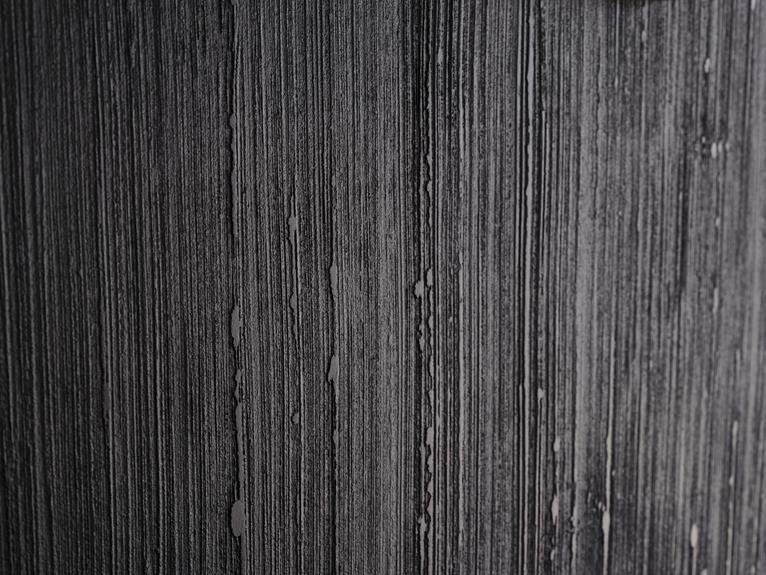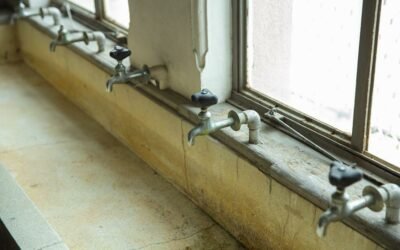Did you know that mold can thrive behind plaster walls in your home?
Understanding the common causes, warning signs, and prevention methods for mold growth is essential for maintaining a healthy living environment.
In this informative article, we will explore the science behind mold growth behind plaster walls and provide you with practical steps to detect and remediate any mold issues that may arise.
Stay informed and keep your home mold-free with our expert advice.
Key Takeaways
- Mold can grow behind plaster walls due to water leaks, high humidity levels, condensation, poor insulation, and lack of proper ventilation.
- Warning signs of mold behind plaster walls include a musty odor, wall discoloration, allergic reactions, and patches of black, green, or brown discoloration.
- To prevent mold growth behind plaster walls, it is important to properly waterproof the home, control indoor humidity levels, improve ventilation, inspect and maintain the plumbing system, and promptly clean and dry surfaces exposed to water.
- Methods to detect mold behind plaster walls include visual inspection, smell tests for the musty odor, and air sampling to analyze mold spore concentration.
Common Causes of Mold Behind Plaster Walls
To understand the common causes of mold behind plaster walls, you should start by examining the sources of moisture in your home. Moisture is the primary factor that contributes to the growth of mold.
One common cause is water leaks, such as from plumbing pipes or roof leaks. These leaks can lead to water seepage into the walls, creating a damp environment that's ideal for mold growth.
Another source of moisture is high humidity levels in your home. Humidity can be caused by inadequate ventilation or excessive moisture in the air. Bathrooms, kitchens, and basements are particularly prone to high humidity levels, as these areas often have increased moisture due to activities like cooking, showering, and laundry.
Additionally, condensation can also contribute to mold growth behind plaster walls. When warm air comes into contact with cooler surfaces, such as cold walls or windows, it can cause moisture to accumulate and create a breeding ground for mold.
Furthermore, poor insulation can lead to moisture buildup behind walls. Insufficient insulation can result in temperature differences between the interior and exterior of the walls, promoting condensation and mold growth.
Warning Signs of Mold Behind Plaster Walls
If you suspect mold behind your plaster walls, there are several warning signs you should be aware of. Mold can thrive in damp and dark environments, making the hidden spaces behind your walls an ideal breeding ground. Here are three common warning signs that may indicate the presence of mold behind your plaster walls:
- Musty Odor: Mold has a distinct, earthy smell that's often described as musty or damp. If you notice an unpleasant odor in a room, especially if it lingers or becomes stronger over time, there's a possibility that mold is present.
- Discoloration: Keep an eye out for any unexplained discoloration on your walls. Mold can cause patches of black, green, or brown discoloration on the surface of your plaster. These spots may appear fuzzy or have a slimy texture.
- Allergic Reactions: If you or your family members experience persistent allergy symptoms such as sneezing, coughing, or itchy eyes when spending time in a particular room, it could be due to mold behind the walls. Mold spores can become airborne and trigger allergic reactions in sensitive individuals.
It is important to address these warning signs promptly to prevent further mold growth and potential health issues. If you suspect mold, it's advisable to consult a professional to assess the situation and determine the best course of action.
How to Prevent Mold Growth Behind Plaster Walls
To prevent mold growth behind plaster walls, you need to take proactive measures to control moisture and improve ventilation in your home. Mold thrives in damp environments, so it's crucial to keep moisture levels in check. Here are some effective strategies to prevent mold growth behind plaster walls.
Firstly, ensure that your home is properly waterproofed. This includes sealing any cracks or gaps in the walls, windows, and doors. Additionally, make sure that your roof is in good condition and free from leaks. By preventing water intrusion, you can significantly reduce the risk of mold growth.
Next, it's important to control indoor humidity levels. You can use dehumidifiers to remove excess moisture from the air, especially in areas prone to dampness such as basements and bathrooms. Keep relative humidity below 50% to inhibit mold growth.
Improving ventilation is another crucial step. Ensure that your home has adequate airflow by opening windows and using fans in areas with high humidity, like the kitchen or bathroom. This helps to circulate fresh air and prevent moisture buildup.
Regularly inspect and maintain your plumbing system to prevent leaks and water damage. Repair any leaks immediately and ensure that pipes are properly insulated to prevent condensation.
Lastly, regularly clean and dry any surfaces that come into contact with water, such as shower walls and kitchen countertops. Promptly address any water spills or leaks to prevent mold from taking hold.
Methods to Detect Mold Behind Plaster Walls
One way to detect mold behind plaster walls is by using a moisture meter. This handy device measures the moisture content in the walls and can help identify areas where mold might be present.
Here are three methods you can use to detect mold behind plaster walls:
- Visual Inspection: Look for signs of mold growth such as discoloration, dark spots, or fuzzy patches on the wall surface. Pay attention to areas that are damp or have experienced water damage, as these are more prone to mold growth.
- Smell Test: Mold often has a distinct musty odor. If you detect an unpleasant smell in a room or near a wall, it could indicate the presence of mold behind the plaster.
- Air Sampling: Air sampling involves collecting air samples from the room and sending them to a laboratory for analysis. This method can help identify the type and concentration of mold spores present in the air, providing a more accurate assessment of mold growth behind the plaster walls.
Steps to Remediate Mold Behind Plaster Walls
To effectively remediate mold behind plaster walls, you should begin by assessing the extent of the mold growth and determining the source of moisture. This is crucial because if the moisture issue isn't addressed, the mold will likely return even after remediation.
Once you have identified the extent of the mold growth, it's important to contain the affected area. This can be done by sealing off the mold-infested area with plastic sheets to prevent the spores from spreading to other parts of the house.
Next, you should remove any materials that are heavily contaminated with mold, such as wet or damaged plaster, insulation, or wallpaper. These materials should be bagged and disposed of properly to prevent further contamination.
After removing the contaminated materials, the affected area should be thoroughly cleaned using a detergent solution or a specialized mold cleaner. It's important to scrub the area vigorously to ensure that all mold spores are removed.
Once the area is clean, it should be dried completely. This can be achieved by using dehumidifiers, fans, or opening windows to increase air circulation. It's crucial to eliminate any sources of moisture to prevent mold from returning.
Conclusion
In conclusion, mold can indeed grow behind plaster walls. Common causes include moisture buildup, leaks, and poor ventilation.
It's important to be aware of warning signs such as musty odors, discoloration, and respiratory issues.
To prevent mold growth, ensure proper ventilation, fix any leaks promptly, and maintain a dry environment.
Various methods can be used to detect mold behind plaster walls, such as visual inspections and mold testing.
If mold is found, proper remediation steps should be taken to ensure a safe and healthy environment.






0 Comments